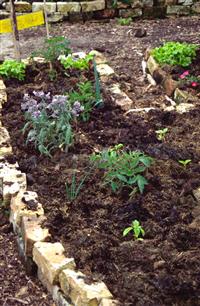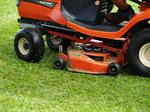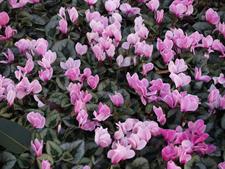Lesson Structure
There are 10 lessons in this course:
- Introduction Planning and managing a garden.
- Cost of Maintenance
- Expensive and Less Expensive areas of a garden
- Planning
- Garden Checklists
- Analysing Maintenance of Parks and Gardens
- Organising Garden Maintenance Staff
- Garden Furnishings and Machinery
- What Tool for What Job
- Overview of Machinery
- Mowers and How to Mow
- Aerators, Chippers, Mechanised Sprayers, Chain Saws, Brush Cutters, etc.
- Tractors
- Tool Maintenance
- Engine Troubleshooting
- Outdoor Furniture -plastic, timber, metal
- Protecting Furnishings -paints, stains, preservatives
- Feeding Plants
- Symptoms of Nutritional and other Problems
- Conducting an Inspection of Plants
- Soil Characteristics and identification of Soil Issues
- Review of Plant Nutrition
- Choosing the Right Fertiliser
- Diagnosing Nutritional Problems
- Improving soils
- Weed Control
- Nature and Scope of Weed Problems
- Natural Ways to Control Weeds -suffocation, burning, cultivation, etc.
- Common groups of weeds and options for treating and recognising different weed varieties
- Weedicides
- How Weeds Spread
- Types of chemicals found in weedicides and suitable weedicide
- Which chemical would control the weed
- Chemicals and the Law
- Natural Pest Control
- Scope and Nature of Natural Controls
- Cultural Controls
- Mechanical Control Methods
- Physical Control Methods
- Methods for controlling selected insects
- Companion Planting
- Common Environmental Problems
- Tolerance Levels in different plants
- Biological Controls
- Natural Sprays
- Buffer Zones
- Mulching
- Chemical Pest Control
- Integrated Pest Management (IPM)
- Ways of Applying Chemicals
- Safety with Chemicals
- Understanding Pesticides -toxicity, LD50, Persistence, etc.
- Specific chemical treatments and a summary of pesticides.
- Turf Management
- Common Turf Problems
- Turf Pests
- Chemical Damage
- Establishment and Maintence of Lawns
- Mowing, Fertilizing, Aeration, etc
- Turf varieties, appropriate turf for specific areas, low and high maintenance turf
- Irrigation
- Importance of Water
- Water Loss from different soils & Improving Water retention
- Understanding Water Dynamics in soil
- Irrigation -types of systems
- Planning an irrigation system
- Using an irrigation system
- Controlling slippery surface
- Maintenance of Plants
- Why Prune

- Before Pruning
- Time of Pruning: Does it matter?
- What to consider when pruning
- Removing Dead Wood
- Controlling shape and size
- How to prune different types of plants
Each lesson culminates in an assignment which is submitted to the school, marked by the school's tutors and returned to you with any relevant suggestions, comments, and if necessary, extra reading.
Aims
- Evaluate the maintenance needs and develop a plan for maintaining a garden.
- Select and maintain tools and equipment appropriately for use in garden maintenance.
- Describe maintenance requirements for garden structures such as furniture, gates and fencing.
- Maintain appropriate nutrition requirements for healthy plant growth.
- Control weeds in a garden.
- Use weedicides in a safe and effective way.
- Control pests using non chemical methods.
- Use chemical pesticides safely and efficiently.
- Maintain lawns in a healthy and well maintained condition.
- Describe options for managing water in a garden.
- Determine actions that should be taken to maintain a variety of different plants.
Article by our Principal, John Mason.
GARDEN MAINTENANCE SERVICES
A garden maintenance business provides services that help to maintain the general health or condition, and the presentation of a garden. These services might include such things as lawn mowing, lawn repair and renovation, pruning, spraying pesticides, fertilising or soil care, replacing old or sick plants, maintaining indoor plants, tree lopping or tree surgery.
 There was a time when anyone could start this type of business and as long as they were prepared to do physical work, and sweat a little, they would have a reasonable chance of success. Garden maintenance today is however increasingly sophisticated, and increasingly mechanised. If you are to do jobs as well as your competition, you must have some basic knowledge. Very often you also need the right machinery or you will simply take longer to do a job, and sooner or later the clients will discover that they can get more for their money by employing a better equipped gardener.
There was a time when anyone could start this type of business and as long as they were prepared to do physical work, and sweat a little, they would have a reasonable chance of success. Garden maintenance today is however increasingly sophisticated, and increasingly mechanised. If you are to do jobs as well as your competition, you must have some basic knowledge. Very often you also need the right machinery or you will simply take longer to do a job, and sooner or later the clients will discover that they can get more for their money by employing a better equipped gardener.
Many home and business owners will contact their local nursery to obtain gardening services, or pay extra to have plants installed rather than digging and planting themselves. Contracting your services through a nursery is a good starting point for a new garden maintenance business, or can be an opportunity for an existing business.
PLANT CARE
The key to any successful gardening business is to understand plant care.
Healthy plants grow stronger, live longer and look better. Everyone wants their plants to be healthy, and with the right plants and the appropriate treatment, there is no reason why all of your plants can't look just as good as anything you would buy from a nursery.
When a plant becomes unhealthy, it's usually because the environment is unkind to it. The temperature may be too hot or cold, it might be too wet or dry, it may have too much or too little fertilizer, or perhaps something else is affecting it. Often a sick plant is found to be suffering from attack by a pest or disease problem; but those problems are far more likely to occur on plants which are already suffering because environmental conditions are not suitable.
The first step towards having healthy plants in a garden is to only keep healthy plants in the garden. If you are designing a garden for someone, or advising a client on what to plant in their garden consider the following:
-Be careful to choose plants which are best suited to the particular soil and environment. This might mean some "terrific" varieties should not be grown; but why grow such plants if they are never going to perform to their peak in that particular environment.
-If the client is determined to grow particular plants that are not suited to the local environmental conditions then consider ways in which those environmental conditions can be modified to suit such plants. For example, provide extra shade for shade loving plants using shade cloth.
-Be ruthless and get rid of sick plants (or branches) before they become diseased and affect other plants.
 WHY PLANTS GET SICK
WHY PLANTS GET SICK
Plants can get sick just as easily as people. The problems they encounter can include:
- PESTS...Animals of various sizes and forms (from microscopic worms to dogs, birds, grazing animals, even humans). Insects are just one of many groups of animals which can cause damage to plants, although they are perhaps the most significant group of plant pests.
- DISEASES...These are problems caused by living organisms other than animals. Fungi, bacteria and virus are the most common.
- ENVIRONMENTAL DISORDERS....Troubles caused by soils, nutritional problems, bad weather conditions such as frost, wind, cold, heat, or poor drainage.
- WEEDS...Plants growing where you don't want them. It is the location of a plant which makes it a weed, NOT the species of the plant. A weed will compete with your desired plants for nutrients, water and space, which can be harmful to your desired plants.
They may also act as hosts to pests and diseases which can affect your desired plants.
PREVENTATIVE MEDICINE IN THE GARDEN
The best way to be sure that problems like those outlined above do not occur in gardens you are maintaining is to prevent problems from ever starting.
This is best done by following the standard procedures listed below:
1. CONSIDER THE SITE
 Does it have any particular problems which should be treated?
Does it have any particular problems which should be treated?
-
Hard clay soils...need to be loosened up by cultivation, or by adding soil conditioners such as lime or gypsum, or by incorporating organic matter, such as well rotted manures and compost.
-
Sandy soils can sometimes dry out too easily or be low in nutrients. To overcome these problems add well rotted manures or compost.
-
Winds...provide wind breaks or channel winds with fences or plantings, or provide suitable staking or support until plants are well established.
-
Shade...large existing trees, or buildings, can create very shady areas. In such areas select plants to grow that will tolerate or even prefer periods of shade.
-
Frost pockets...on sloping sites remove a frost pocket by planting or fencing in a way that allows air movement to continue unimpeded down the slope.
-
Other soil problems, such as low nutrient levels, or diseases may have built up, particularly where the same type of plant has been grown in a particular spot year after year, or the soil may be full of a mat of dead roots. Consider cultivating and building up the soil, and replanting with different types of plants that are not susceptible to any particular diseases that may be present.
2. BUILD UP THE SOIL
Before you even start a new garden, make sure the soil is in top condition. Make sure drainage, nutrition and the structure (crumbly and easily worked) of the soil is suitable for the plants you wish to grow. This may involve laying drainage pipes, applying fertilizers, gypsum (to help improve structure in heavy soils) or lime, or digging in manure and compost (to improve  structure and nutrients). Kill existing soil pests or weeds first if you have any particularly serious problems.
structure and nutrients). Kill existing soil pests or weeds first if you have any particularly serious problems.
3. USE HEALTHY PLANTS/SEEDS
Healthy plants are more likely to resist damage from pests and diseases, and more likely to recover if they are attacked. When choosing plants the roots and top growth of the plant should be well developed. There should be no deformed growths (e.g. twisted, distorted leaves, swellings on roots). Avoid plants with badly marked leaves. Don't use plants contaminated with insects. Seeds and bulbs should be fresh, free of abnormal markings or any rots. Don't compromise on quality. Trying to save a little money by buying plants that are not in top condition will cost you a lot more in the long term, through plant losses, higher maintenance requirements, and to your reputation.
Varieties which are resistant to diseases/pests are better. Use varieties known to be successful in the locality of your clients property. Look around local gardens and see what grows best.
4. MAINTAIN CLEANLINESS
-
Remove any diseased fruit, flowers, leaves,or other plant parts, and burn them. Do not compost them or let them lay on the ground!
-
Wash soil off paths and concrete areas. Soil tracked from one area to another may spread diseases.
-
Sit plants in containers on stones or paving, or on top of a couple of bricks (not directly on top of soil). This minimises movement of disease from the soil up into the pot.
-
Be careful not to wear dirty boots into a propagation area...this can carry diseases from the general garden into the propagation area.
-
Hoses and their fittings should be neatly stored above ground so that they are not in contact with the ground, otherwise they can pick up diseases easily and spread them rapidly when used.
-
All tools should be regularly cleaned of soil and other debris. Tools used for cutting plant tissue should be regularly

disinfected (e.g. dipped in 'metho"' or a disinfectant such as Dettol).
5. MAINTAIN THE NUTRITION & WATER NEEDS OF THE PLANT
Do not over water or underwater...both are as bad as each other! Over watering (water logging) is indicated by yellowing of the lower leaves, sometimes wilting and eventually dropping of the lower leaves. Under watering is indicated by browning of the tips and foliage generally, and at times by severe wilting and leaf drop. Lack of nutrients is indicated by a slow rate of growth, and in severe cases, by discolouration patterns on leaves.
6. INSPECT PLANTS REGULARLY AND ACT AS SOON AS A PROBLEM IS DETECTED
Look at tips first. The young growth will indicate general vigour (or lack of it). Look for die-back, discolouration of leaves or wood, distortion of growth, rots, eaten or broken tissue.

WHY CHOOSE US?
- Reputation: well-known and respected in horticulture.
- Industry focus: courses designed to suit industry needs and expectations.
- Different focus: develop problem solving skills that make you stand out from others.
- Hands on: develop practical as well as theoretical skills.
- Lots of help: dedicated and knowledgeable tutors (faculty of internationally renowned horticulturists).
- Efficient: prompt responses to your questions.
- A Long Track Record: established in 1979 with a solid history.
- Up to date: courses under constant review.
- Resources: huge wealth of constantly developing intellectual property.
- Value: courses compare very favourably on a cost per study hour basis.
- Student amenities: online student room, bookshop, ebooks, acs garden online resources.
How This Course Can Help You
This course is one of those must-study courses for anyone interested in working in gardens. It equips students with a broad knowledge of practical techniques and methods for dealing with all the most common problems and tasks encountered in caring for gardens. You'll learn about pest, disease and weed control, how to use different tools and machinery, basic turf management, and pruning and feeding plants. The course is perfect for anyone working in, or planning on working in, the following areas:
- Garden maintenance
- Parks & gardens
- Botanic gardens
- Landscaping
- Garden restoration & conservation
WHAT NEXT?
Register to Study - Go to panel toward top of this page (right column)
or
Get Advice - Use our FREE COUNSELLING SERVICE to contact a tutor
CLICK TO CONTACT US
<